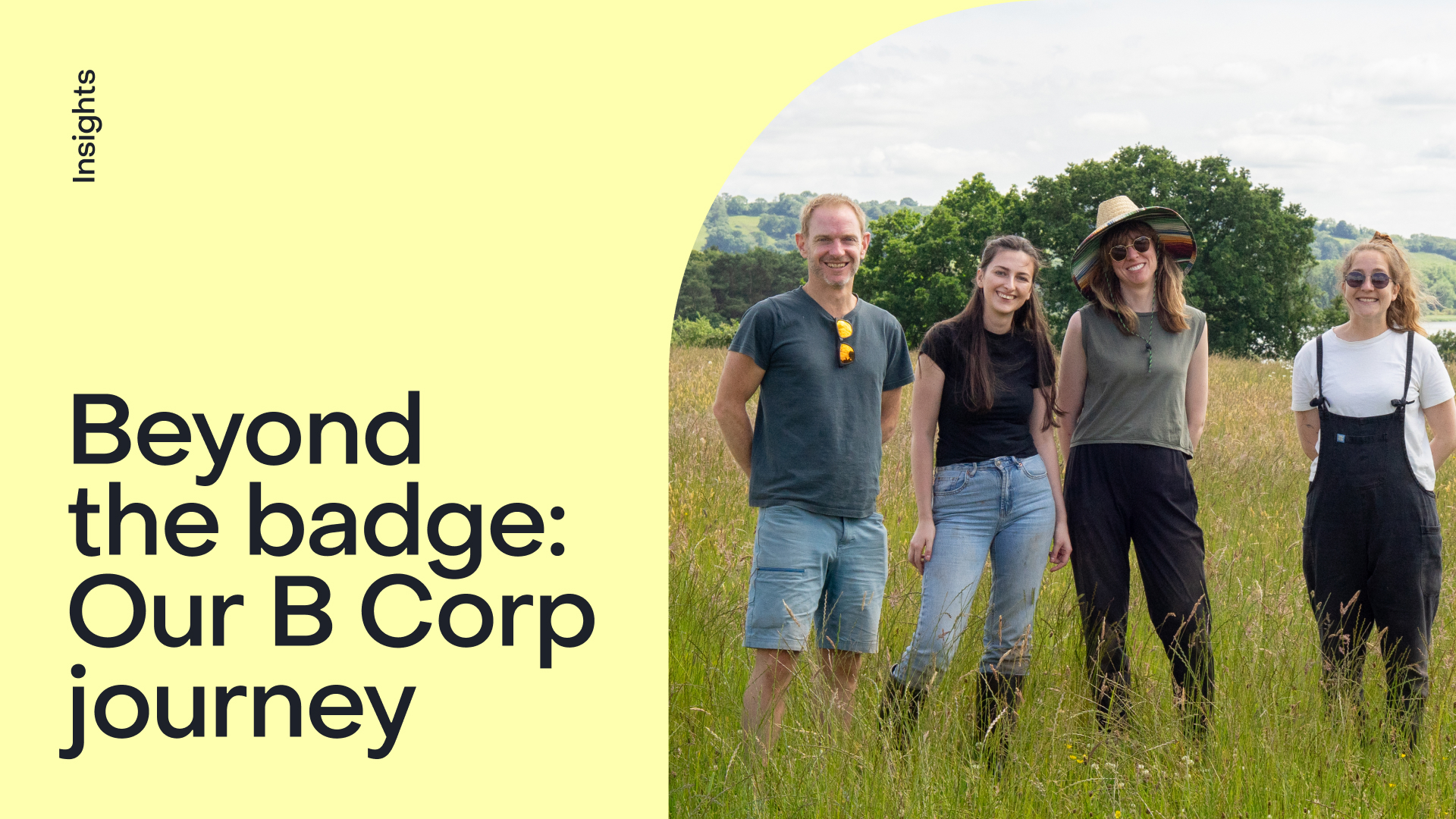How to create a winning pitch deck for your climate startup
Are you a climate startup pitching to supporters and investors? Check out our slide-by-slide guide for structuring a winning pitch deck.

Emma Higgins

Your pitch deck needs to look great - but it also needs strong and strategic foundations that quickly convey your startup’s mission, innovative solutions, and potential for impact. Here’s our slide-by-slide guide for structuring a winning pitch deck to help you get the investment and supporters you need to take you to the next level.
Firstly - some top overall tips:
- Keep it concise: Your deck - and each slide within it - should be as short, clear and impactful as possible.
- Data visualisation is key: Clever data visualisation can tell a story, making complex data much easier to understand - and therefore compelling.
- Tell a story: Frame your startup as part of the broader narrative of combating climate change.
- Be very clear about your environmental impact: Investors in climate tech care about returns, but also the measurable impact on the planet.
Slide 1. Introduction: Company Overview & Mission
- Start with a clear, concise statement about your startup’s mission and its connection to solving a climate-related problem.
- Key Points:
- One-liner that summarises what your company does (e.g., "We create scalable solar energy solutions for rural communities.")
- Emphasise the positive environmental and societal impact of your solution.
- Mention any core values driving your business.
Slide 2. The problem: highlight the urgency
- Present the specific climate issue you're addressing and why it's so important we act now.
- Key Points:
- Use statistics or impactful data visualisations to show the scale of the problem (e.g., emissions, deforestation, pollution).
- Explain why current solutions are inadequate.
- Make the problem relatable, showing the long-term economic, social, and environmental risks of inaction.
Slide 3. Your solution: how it works and why it’s innovative
- Clearly describe your product or service and how it directly addresses the climate issue.
- Key Points:
- Highlight what makes your solution unique and why it's a game-changer in the climate space.
- Explain the technology behind it (avoid jargon, make it easy to understand).
- Showcase real-world applications, pilot results, or early case studies to demonstrate impact.
- Make scalability a focus: How will this solution grow?
Slide 4. Market opportunity: how is your solution profitable?
- Convince investors there’s a profitable market for your solution.
- Key Points:
- Provide a market overview (size, growth rate, and climate sector trends).
- Show how your startup fits into growing markets like renewable energy, carbon credits, or sustainable agriculture.
- Highlight key sectors or regions with the highest demand for your solution.
Slide 5. Business model: your path to profitability
- Explain how your startup plans to make money.
- Key Points:
- Define your business model (B2B, B2C, subscription, licensing, etc.).
- Outline pricing strategy and key revenue streams
- Showcase your unit economics and customer acquisition cost (CAC) to lifetime value (LTV) ratio.
Slide 6. Traction: demonstrate early success
- Show that you’ve gained some momentum.
- Key Points:
- Mention partnerships, pilot programs, early adopters, or customer testimonials.
- Highlight any key milestones like product launches, revenue growth, or user growth.
- Showcase any industry awards, grants, or media coverage.
Slide 7. Growth strategy: plan for expansion
- Detail how you plan to scale your solution and reach your target customers.
- Key Points:
- Describe the sales and marketing strategies you will use to gain market share (e.g., partnerships, direct sales, online marketing).
- Explain your target audience and customer acquisition channels.
- Discuss international expansion if relevant, or other markets you aim to penetrate.
Slide 8. Impact: climate and social benefits
- Illustrate the tangible positive effects of your product/service on the environment.
- Key Points:
- Paint a picture - this is where you can really reach your audience emotionally.
- Quantify your climate impact: emissions reduced, energy saved, waste minimised, etc.
- Consider using metrics like avoided CO2 emissions, increased biodiversity, or number of people benefiting from sustainable energy.
Slide 9. Team: the right people to execute
- Highlight the talent and expertise that makes your team capable of succeeding.
- Key Points:
- Showcase the relevant experience of your leadership team (climate, tech, business).
- Mention key advisors, board members, or partners with climate expertise.
Slide 10. Financials: future forecast
- Demonstrate a clear path to profitability.
- Key Points:
- Provide a 3-5 year forecast with revenue, expenses, and profitability.
- Include key financial metrics: customer growth, gross margins, and projected fundraising rounds.
- Address any anticipated risks or challenges and how you plan to mitigate them.
Slide 11. The ask: call to action
- Clearly state what you're asking for and how it will be used.
- Key Points:
- Specify the amount of capital you’re raising.
- Explain how the funds will be allocated (e.g., product development, hiring, scaling, marketing).
- Highlight the projected impact of this investment on both business growth and environmental outcomes.
Slide 12. Closing: vision for the future
- End with an inspiring vision of the future, showing how your startup will make a large-scale difference.
- Key Points:
- Reinforce your mission and the lasting impact your solution will have.
- Describe what success looks like in 5-10 years, both in terms of business and environmental outcomes.
- Leave a memorable closing line that resonates with your audience.
By creating a pitch deck that combines the urgency of the climate crisis with a clear, scalable solution, your climate startup can inspire both investment and action. Get in touch to learn more about how we can help you create everything you need to make your climate startup stand out.


.jpg)